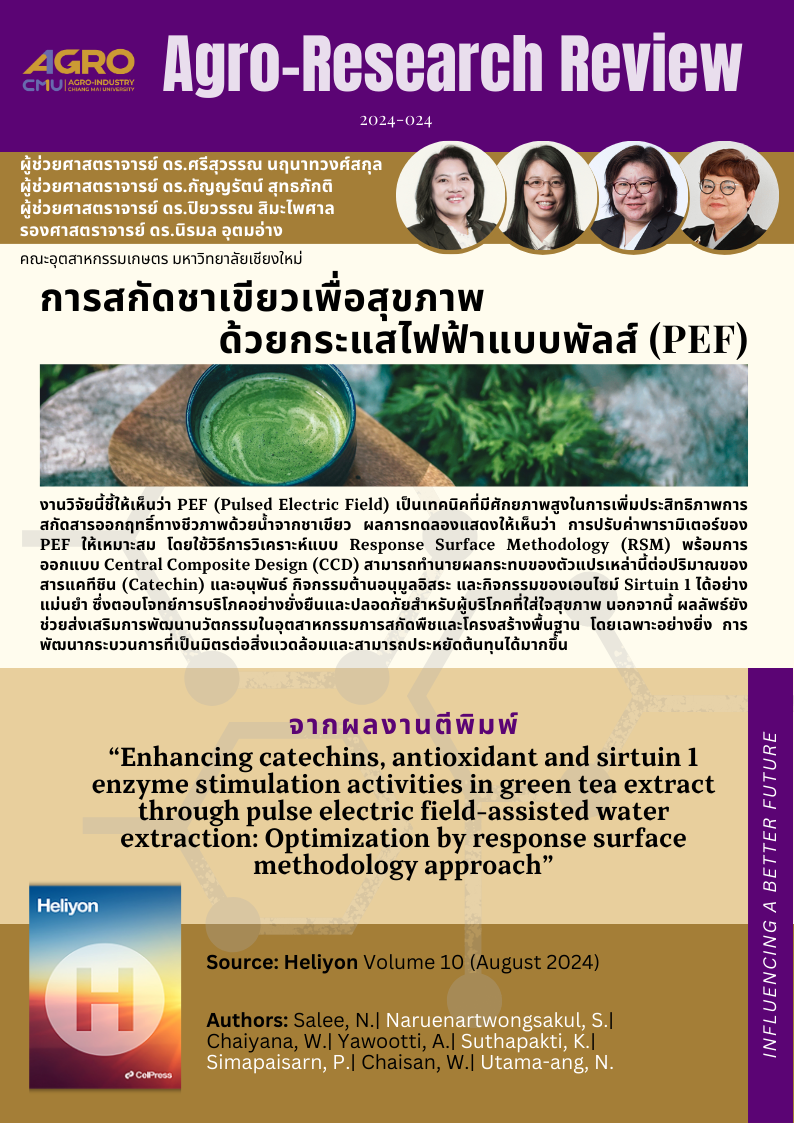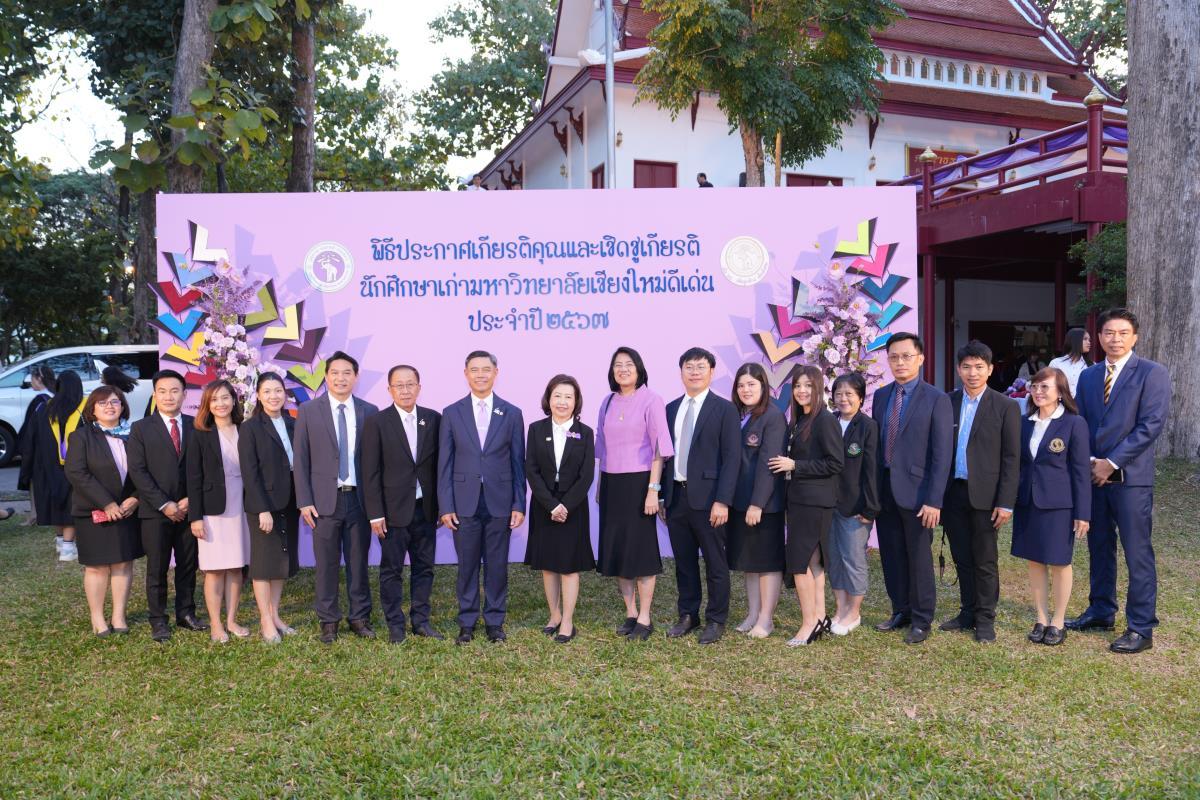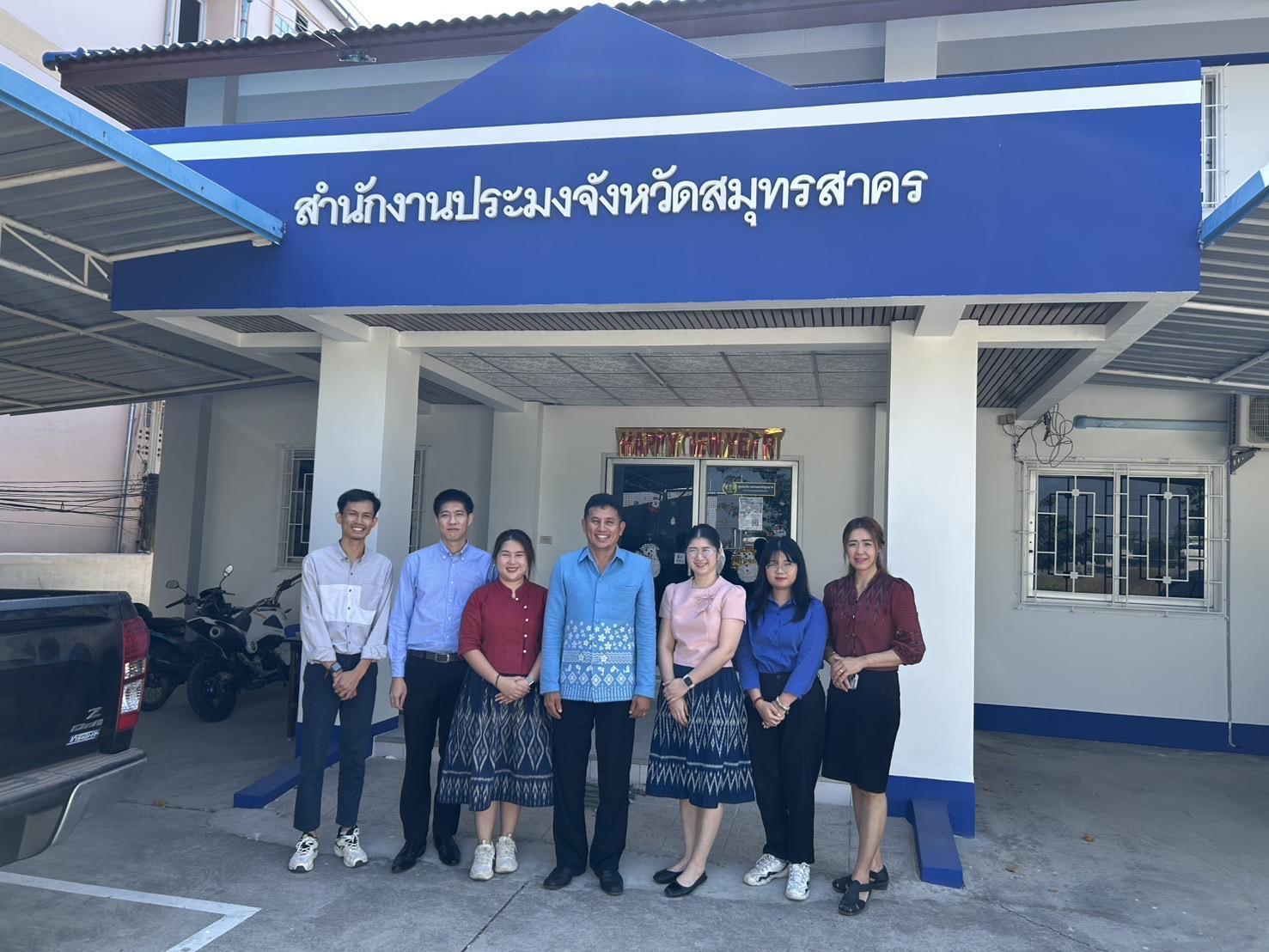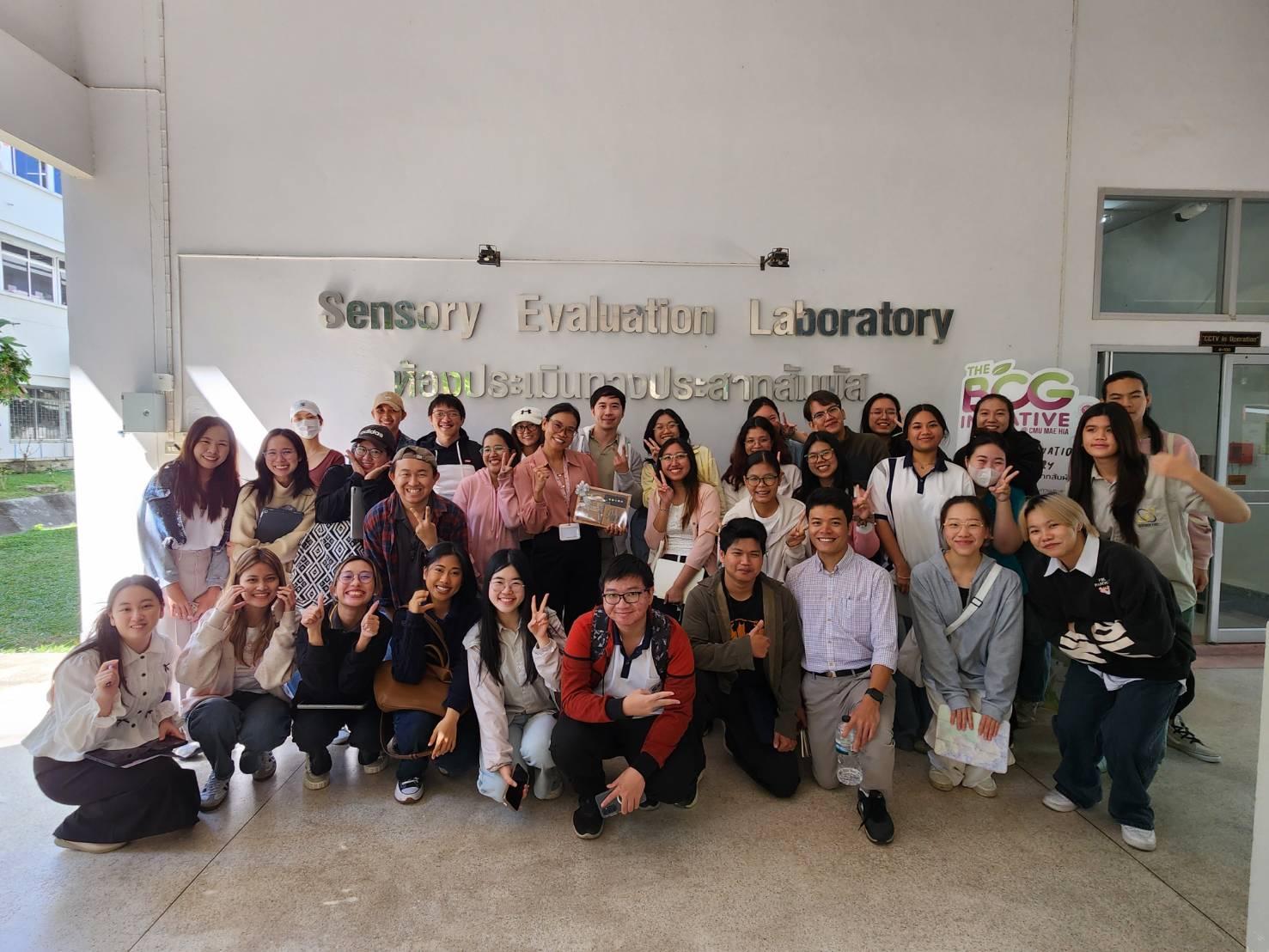
แนะนำงานวิจัย 2024-024 การสกัดชาเขียวเพื่อสุขภาพ ด้วยกระแสไฟฟ้าแบบพัลส์ (PEF)
งานวิจัยนี้ชี้ให้เห็นว่า PEF (Pulsed Electric Field) เป็นเทคนิคที่มีศักยภาพสูงในการเพิ่มประสิทธิภาพการสกัดสารออกฤทธิ์ทางชีวภาพด้วยน้ำจากชาเขียว ผลการทดลองแสดงให้เห็นว่า การปรับค่าพารามิเตอร์ของ PEF ให้เหมาะสม โดยใช้วิธีการวิเคราะห์แบบ Response Surface Methodology (RSM) พร้อมการออกแบบ Central Composite Design (CCD) สามารถทำนายผลกระทบของตัวแปรเหล่านี้ต่อปริมาณของสารแคทีชิน (Catechin) และอนุพันธ์ กิจกรรมต้านอนุมูลอิสระ และกิจกรรมของเอนไซม์ Sirtuin 1 ได้อย่างแม่นยำ ซึ่งตอบโจทย์การบริโภคอย่างยั่งยืนและปลอดภัยสำหรับผู้บริโภคที่ใส่ใจสุขภาพ นอกจากนี้ ผลลัพธ์ยังช่วยส่งเสริมการพัฒนานวัตกรรมในอุตสาหกรรมการสกัดพืช และโครงสร้างพื้นฐาน โดยเฉพาะอย่างยิ่งการพัฒนากระบวนการที่เป็นมิตรต่อสิ่งแวดล้อมและสามารถประหยัดต้นทุนได้มากขึ้น
This study highlights that the Pulsed Electric Field (PEF) is a highly potential technique for enhancing the efficiency of bioactive compound extraction from green tea using water. The experimental results demonstrated that optimizing PEF parameters through Response Surface Methodology (RSM) combined with Central Composite Design (CCD) effectively predicted the effects of these variables on the content of catechins and their derivatives, antioxidant activities, and Sirtuin 1 activity with high accuracy. This approach aligns with the goals of sustainable and safe consumption for health-conscious consumers. Moreover, the findings contribute to the development of innovations in the plant extraction industry and related infrastructure, particularly by promoting environmentally friendly and cost-effective processes.
Topic: Enhancing catechins, antioxidant and sirtuin 1 enzyme stimulation activities in green tea extract through pulse electric field-assisted water extraction: Optimization by response surface methodology approach
Authors: Salee, N.| Naruenartwongsakul, S.| Chaiyana, W.| Yawootti, A.| Suthapakti, K.| Simapaisarn, P.| Chaisan, W.| Utama-ang, N.
Abstract:
Green tea is an economic resource in Thailand because it is derived from smallholder agriculture and has expanded into food production. The purpose of this study is to optimize the parameters of pulsed electric field (PEF) assisted green tea extraction to produce a natural health product. A central composite design was involved to determine the effect of independent variables, including the intensity of electric field (I; 3–5 kV/cm), number of pulses (Np; 1000 to 3000 pulses) and green tea-to-water ratio (GT/W; 0.05–0.15 g/mL) on catechin (C), epicatechin (EC), epicatechin gallate (ECG), epigallocatechin (EGC) and epigallocatechin gallate (EGCG), total phenolic compound, antioxidant and sirtuin 1 enzyme stimulating activities. The results indicated that the Np had the most significant impact (p < 0.05) on the content of catechin and its derivatives and sirtuin 1 enzyme stimulating activity. The observations revealed that the I had a greater impact on antioxidant activities compared to the Np. The optimal conditions for PEF using the response surface method were determined to be I of 5 kV/cm, Np of 3000 pulses, GT/W of 0.14 g/mL and specific energy of 27 kJ/kg. Under the optimized conditions, the content of C, EC, ECG, EGC and EGCG were 7.34 ± 0.33, 11.26 ± 0.25, 3.75 ± 0.13, 7.53 ± 0.77 and 37.78 ± 0.58 mg/g extract, respectively. Furthermore, it was observed that green tea extract exhibited the ability to modulate the deacetylation activity of the sirtuin 1 enzyme, with a value of 22.63 ± 0.17 FIR. The results emphasized that the PEF led to achieving better responses compared to without pre-treatment using the PEF. Therefore, innovative technologies as PEF can be utilized for green tea extraction to produce natural ingredients, which can contribute to improved accessibility to healthcare. Additionally, the implementation of innovation techniques, such as PEF, in the extraction industry can enhance productivity growth and economic development.
Keywords: Antioxidant activity; Catechin; Green tea; Pulse electric field; Sirtuin 1 enzyme; Water extraction
View at publisher: https://www.sciencedirect.com/science/article/pii/S2405844024125108?via%3Dihub



